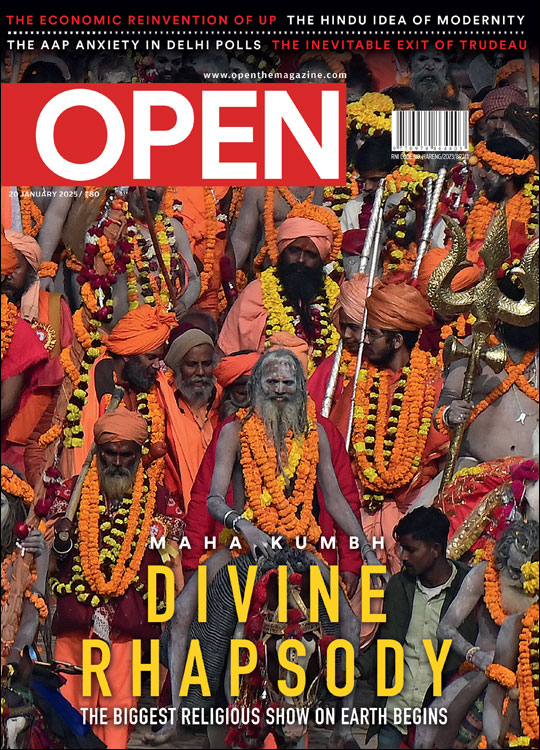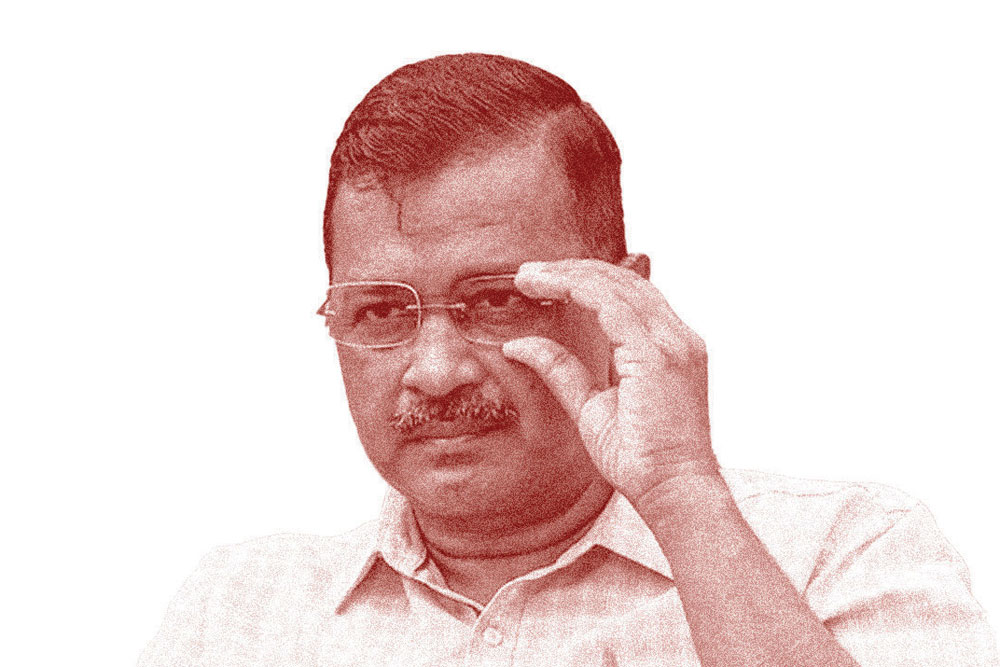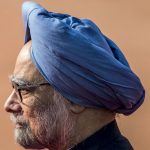City Slickers
To say that Urban Naxals are a myth is a myth itself. But that should not become a licence for the state to suppress activism either
 Rahul Pandita
Rahul Pandita
 Rahul Pandita
Rahul Pandita
 |
06 Sep, 2018
|
06 Sep, 2018
/wp-content/uploads/2018/09/Cityslickers1.jpg)
ON AUGUST 28TH, the Pune Police arrested five Left-wing activists from different cities, including Delhi and Hyderabad. They and five others, arrested earlier on June 6th, have been accused of being part of a conspiracy to assassinate Prime Minister Narendra Modi. The police claim they came across incriminating evidence in this regard while probing the alleged Maoist connection in violence during a Dalit commemoration event on January 1st in Bhima Koregaon village, about 30 km from Pune.
The police action has received flak from many civil rights activists and intellectuals who have accused the Modi Government of stifling anti-government voices. As it heard an urgent plea against the arrests, the Supreme Court also remarked that ‘dissent is the safety valve of democracy’.
Whether the activists are involved in Maoist activities will be decided by the court. But so far, from the way the Pune Police has produced evidence in the case, it is very unlikely that they will be able to prove their charges. Reacting to the prosecution’s argument, terrorism expert Ajai Sahni said that if he had read its excerpts without context, he would have thought them the work of a satirist or comedian (among other unreasoned arguments, the prosecution claimed that the accused had formed an ‘anti- fascist front’, and that one of them, Arun Ferreira, was recruiting young people by holding photo exhibitions about cases of mob lynching). Even the BJP’s ally Shiv Sena has termed the police allegations of plot to assassinate Modi as ‘stupid’.
In the last few years, the Maoist insurgency has weakened considerably on account of sustained operations by security forces. Though they still manage to hit security forces in ambushes, their area of influence has shrunk significantly. A recent Home Ministry assessment says that from 126 districts, the Maoist influence has come down to 90. In fact, the number may be even smaller. For example, the assessment lists eight districts in Chhattisgarh as ‘most-affected’. In reality, it is only four to five districts in the state where Maoists are still entrenched. It is here that the final battle with the Maoist guerrillas will be fought.
As roads are being built in Maoist bastions like the ones in Chhattisgarh, and the resentment against Maoists among adivasis is growing, security forces on ground are hoping that they should be able to contain the insurgency in the next five to seven years. But to go after activists who might be at worst Maoist sympathisers sets a bad precedent—there are specific court judgments that have ruled that no person can be detained merely because he or she is a Maoist, unless there is proof of their indulging in unlawful activity.
Some of those arrested have a rather established record of activism. The activist Sudha Bharadwaj, for example, has worked for long in Chhattisgarh for the welfare of the poor and the marginalised people. One of country’s foremost Dalit intellectuals, Anand Teltumbde’s house in Goa was searched by the police in his absence. Teltumbde, who has previously been an executive director at Bharat Petroleum and is an alumnus of the Indian Institute of Management, Ahmedabad, said that “the entire process was conducted as though I was a dreaded terrorist or a criminal”. Ironically, Teltumbde had critiqued Dalit organisations who marched to Bhima Koregaon, calling such marches ‘counter-productive’ in the current times. The Nagpur-based advocate Surendra Galding has been fighting cases of those accused by the state of being Maoists, including Ferreira, who had to spend over five years in jail on these charges and was later acquitted by a court in January 2012.
The arrest of the activists has triggered a huge debate on whether the phenomenon of ‘Urban Naxals’ is a fact or a myth perpetrated by the state. To understand this, we must go back to about 10 years, when the Maoist insurgency was at its peak.
Most of the senior leaders of the CPI (Maoist), like Patel Sudhakar Reddy, were killed or arrested only after they ventured into urban areas
In 2009, the then Prime Minister Manmohan Singh termed Maoist insurgency as the country’s “biggest internal security threat”. It was a time when the Maoists were gaining an upper hand in many areas. Their senior leader Kishenji had turned Lalgarh in West Bengal into a liberated zone of sorts.
A few years earlier, the two main Maoist groups had merged to form the Communist Party of India (Maoist). In 2008, in a daring attack on a police armoury in Odisha’s Nayagarh, the guerrillas killed 14 policemen and took away huge quantity of arms and ammunition. In April 2010, the Maoists killed 75 jawans of the Central Reserve Police Force (CRPF), and one local policeman, in an ambush in Tarmetla in Chhattisgarh. It was the highest number of casualties that security forces had suffered in a single episode in any theatre of insurgency across India.
Soon afterwards, the Government launched a massive operation against Maoists. About 100,000 troops, mostly from the CRPF, were pushed into Maoist-affected areas. Under the Congress-led Government at the Centre, the police and intelligence agencies also launched a tirade against activists they alleged were Maoist sympathisers. The activists and civil liberty groups began to protest against security operations in Maoist-affected areas, by this time known as Operation Green Hunt. In public meetings and protests held in Delhi and elsewhere, they called it the Government’s attempt to suppress the poor and the marginalised people of the country.
In March 2010, the then Union Home Minister P Chidambaram made a statement in Parliament regarding the alleged sympathies of some of these groups. He said: “Available inputs indicate that organisations such as PUDR, PUCL and APDR take up issues of CPI (Maoist). Both the Central and state governments keep a watch on the activities of these organisations.” An Intelligence Bureau report claimed that the Maoists had more than 50 bodies working for them as frontal organisations. In 2013, Maharashtra’s Anti-terrorism Squad (ATS) claimed that it had several students of three prestigious educational institutes under its watch—two in Mumbai and one in Pune—for possible links to the Maoists.
It is during Chidambaram’s tenure that a fear psychosis was created among activists vocal about the Government’s dubious role in Maoist-affected areas, like on the issue of Salwa Judum— a rogue civil militia created in Chhattisgarh to fight Maoists. Earlier, the activist Binayak Sen had been arrested for his alleged involvement with Maoists. He had to spend months in jail before the Supreme Court provided him relief. In 2011, the apex court had rapped the Chhattisgarh government for treating historian Ramachandra Guha, academic Nandini Sundar, social activist Swami Agnivesh and former bureaucrat EAS Sarma as Maoist supporters just because they chose to bring to fore the atrocities committed by the Judum forces.
The same attitude to dealing with dissent was practised by the Modi regime as well. In 2016, an FIR was filed against activist and Delhi University professor Nandini Sundar and few others on a fake complaint by a slain man’s wife. It was claimed that they were inciting tribals against the Government and seeking their support for Maoists. Last year, the civil rights activist and scholar Bela Bhatia was threatened by a mob in Chhattisgarh, which asked her to leave Bastar within 24 hours.
Maoist cadres were advised to create strongholds within slums. ‘Mumbai has 49 per cent of its population in slums,’ read a seized document
THE CPI (MAOIST) has had an elaborate urban agenda to make forays into cities and towns. In 2007, the police recovered a strategic document on how to go about it from the laptop of a Maoist who was returning from the Maoist Party Congress, held in Bhimbandh in Bihar. It states: ‘We should not forget the dialectical relationship between the development of the urban movement and the development of the people’s war. In the absence of a strong revolutionary urban movement, the people’s war will face difficulties.’
The document talks about how unemployment rate is increasing and how the ruling class has in efforts to make global cities pushed the poor out. Thus the objective, says the document, should be to organise such masses. It talks of dealing with problems of Dalits and Muslims, and mobilising them.
The document also lays emphasis on forming cover organisations which may not disclose their links with the Maoists. It advises Maoist cadres to pay attention to organising workers within slums and other such localities. ‘Through this we can get in touch with new workers from various industries, we can draw the families of the workers into the movement, and we can organise the semi-proletariat and other sections of the urban poor living in the slums and poor localities,’ it reads.
The document cites the example of the Peru Communist Party, which it says was successful in creating strongholds in the shanty towns of its capital Lima. ‘The slum population of India is over four crores, spread in more than 600 towns. The largest mega city, Mumbai has 49 percent of its population in slums,’ it says.
The document accepts that throughout the time of Maoist movement there has been a disregard towards the task of urban movement. ‘Having understood the formulation that rural work is primary and urban work is secondary in a mechanical way we concentrated most of our leadership forces only in rural work,’ the Maoist leadership felt during discussions at the Party Congress.
But, largely, the Maoist dream of infiltrating cities has remained just that—a dream. In the absence of popular support, and because India’s burgeoning middle class has remained oblivious to their utopia of revolution, the Maoists have failed to implement their urban agenda. In fact, most of the senior leaders of the CPI (Maoist) were killed or were arrested only after they ventured into urban areas. Patel Sudhakar Reddy, Solipeta Kondal Reddy, Sakhamuri Appa Rao and Cherukuri Rajkumar (Azad) are among prominent leaders who Maoists maintain were picked up from urban areas like Nashik and Pune, and then killed in alleged fake encounters in forest areas. Senior Maoist ideologue Kobad Ghandy was arrested from Delhi in September 2009; in February 2010, a senior Maoist leader, Bansidhar Singh alias Chinta da, who held a doctoral degree from the Jawaharlal Nehru University, was arrested from a hideout in Kanpur. Intelligence agencies believe that Maoists were involved in agitation and violence related to the Khairlanji incident, and in Singur and Nandigram. Barring a few individuals, the recruitment from cities and towns has also remained insignificant.
Apart from arrests and killings, several Maoist ultras have surrendered in the past few years owing to internal tussle and are now living under police protection. The remaining leadership is aged and under tremendous pressure from security forces. As Open reported last year, the government is now building a major road through the Maoist ‘Tora Bora’ in Chhattisgarh. Earlier in April, electricity was restored in erstwhile Maoist bastions like Chintalnar after a period of 15 years—the area was made powerless by Maoists after they uprooted power infrastructure to make it difficult for security forces to operate.
Now under a new strategy, the CRPF is going after Maoist overground workers in villages. “We are now going after their workers and jan militia who give them intelligence and local support,” said CRPF’s Director General RR Bhatnagar. In a recent big operation, the Chhattisgarh police claimed to have killed 15 Maoists, including an area committee member, in Sukma district.
Of course, today, Chidambaram has spoken about the arrest of the five activists, and said there is no such thing as urban Naxalism. But that is sheer hypocrisy. The state response to Maoists and those alleged to be its flagbearers has remained unchanged. While the state must go after the Maoists and keep watch to thwart their attempts in making inroads in urban areas, it must make sure that those who have the welfare of the poor and the exploited in their hearts do not become victim of the police overreach.
In an interview to this correspondent in 2010, the Maoist supreme commander Ganapathi had said: “If Giridih [a Maoist- affected area in Jharkhand] is liberated first, then based on its strength and on the struggles of the working class in Gurgaon, Gurgaon will be liberated later. This means one is first and the other is later.”
The state must ensure that while both Giridih and Gurgaon stay free of Maoists, those working here or those becoming the voice of the marginalised like industrial workers are not targeted unjustly.

/wp-content/uploads/2025/01/Cover_Kumbh.jpg)













More Columns
The lament of a blue-suited social media platform Chindu Sreedharan
Pixxel launches India’s first private commercial satellite constellation V Shoba
What does the launch of a new political party with radical background mean for Punjab? Rahul Pandita